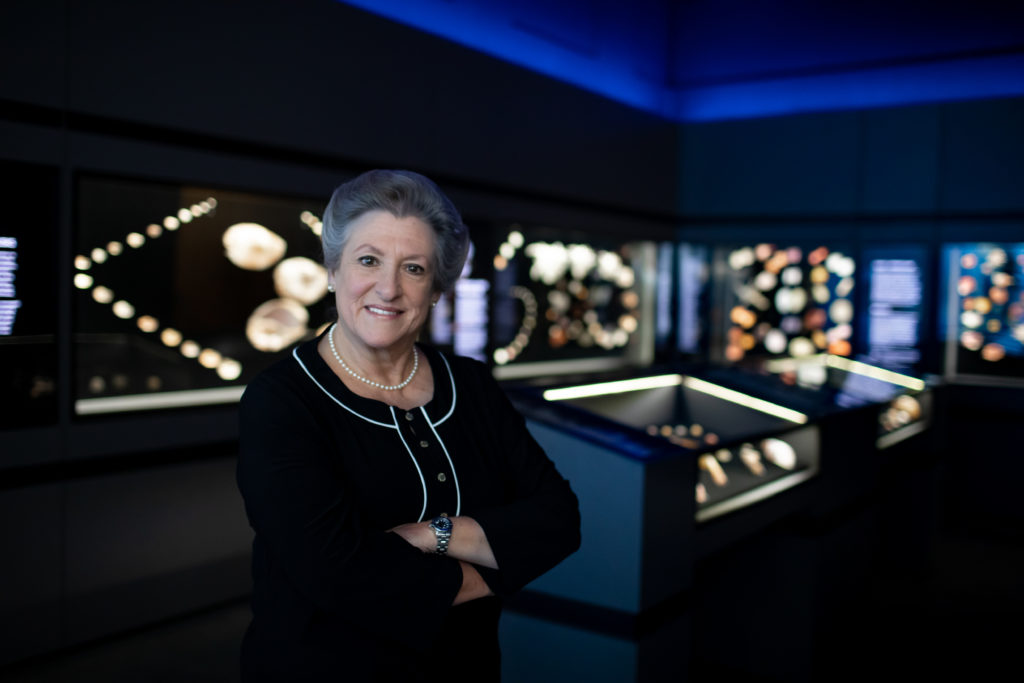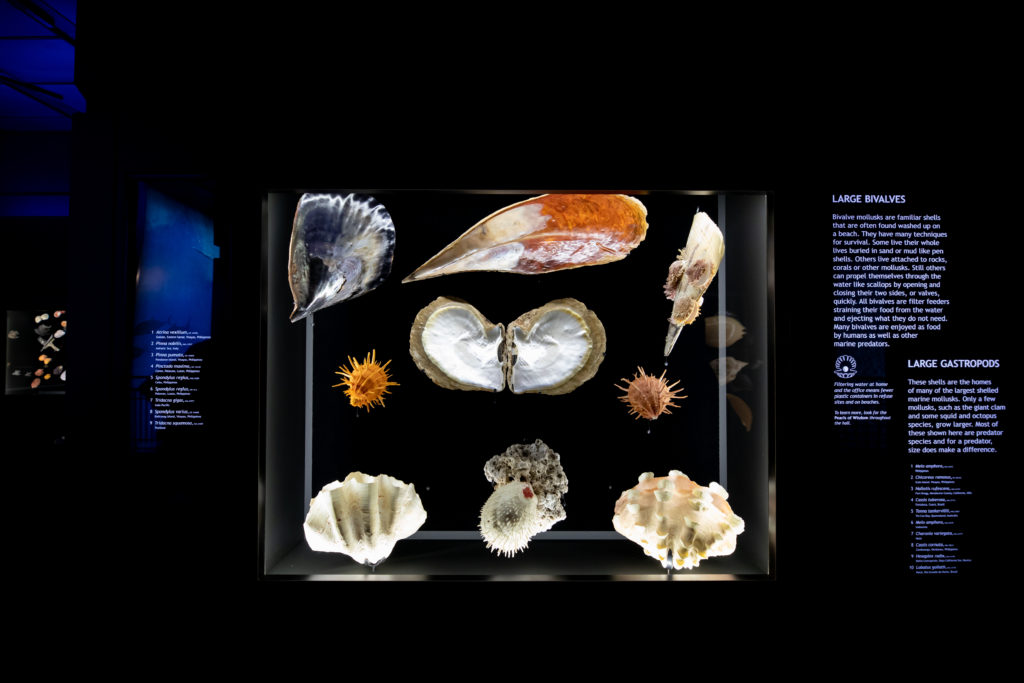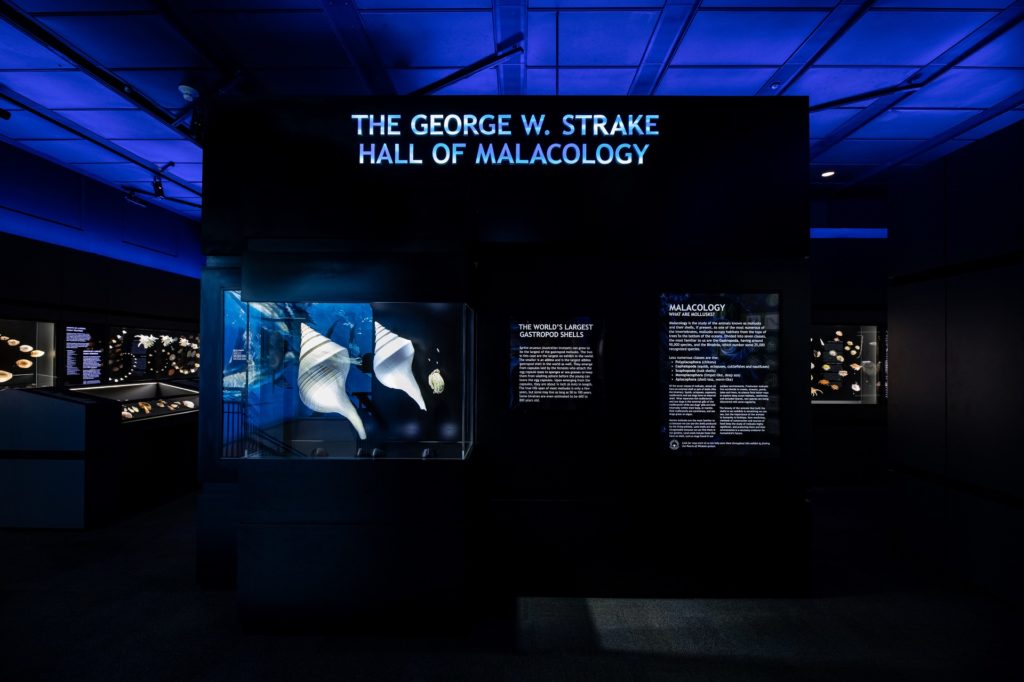Ever since she was a little girl, Tina Petway has been enthralled with shells. Living along the Texas Gulf Coast, it just comes naturally to many of us.
The Houston native, now the associate curator of the George W. Strake Hall of Malacology at the Houston Museum of Natural Science, spent every moment she could spare scouring the beaches of Galveston Island for unique specimens from the muddy gulf waters.

Anyone who has visited the museum’s malacology hall (recently revamped in August 2019) can feel the love and care for our heartiest dwellers that Petway carries with her. Shells, mollusks, and other assorted members of the ocean world are arranged with care and dignity, with an eye on conservation. Visiting the hall is like taking a stroll through Petway’s sea breeze-kissed heart.
For this installment of “Fill in the Blanks” we dove into Tina’s mind for the lowdown on HMNS, malacology, and the magic she sees in the colors around us.
If there is one thing I have learned at HMNS it’s that nothing stays the same. We are constantly finding our world holds much to learn and we will continue to highlight and present new ideas and support those working to add to our knowledge of the universe and earth’s environments.
If I had only ten minutes to visit HMNS I would run through the paleontology hall then through the gems and minerals. I would chill in the Hall of Ancient Egypt for 30 seconds then breeze through the butterfly center.
Lastly, I would gaze fondly at the fabulous shells in the malacology hall, and on my way out I would zip through the museum store. I’m pooped just thinking of all I have just seen but didn’t get to examine more closely.

Some people probably don’t know that I am an artist who loves ceramics, detailed drawing, and color, color, color! Ceramics is a very tactile field where historical objects left by other civilizations influence similar items which are useful even today; case in point: the coffee cup.
As for color, I do not have a favorite. I cannot think of one color without mentally comparing it to a corresponding or contrasting color; they are all connected. And I do love wearing colors that express an attitude or a feeling. But the most outstanding color I can think of is the soft aqua color of the ocean near coral reefs. There is nothing else in nature that makes me quite so happy as that awesome environment.
If I had the world’s ear for just five minutes I would tell the world that if we don’t do more to save our oceans and all the marine life dependent on it, we will doom our presence on the earth. Without clean water to drink, water our crops, create energy, and feed the people, there would be no life as we know it. We must find more ways to raise sea life by “farm-raising” food supplies of fish, algae, crustaceans, and mollusks, which feed most of the world’s peoples as much as 70 percent of their diets.
Wild populations of these resources are not bottomless. Already some species are endangered and continue to be harvested with no thought for the future. We must stop trashing our oceans and draining its resources, and stop the hunting of marine mammals if we are to have a bright future to hand over to the coming generations.

The wisest person I ever met showed me that a simple thing like looking a stranger in the eye instead of looking away can be one of the most impactful things we can do. When you are walking along do you look away when approaching an unknown person? Do not be afraid to smile or even speak; a simple “hello” or “how are you doing” could change a person in ways you could not imagine. We can change the world with the thoughtfulness of such a small thing, and it is so easy.
Working at a science museum has given me the opportunity to work with people who are dedicated to inspiring others with the ever-expanding knowledge of so many aspects of our lives. Of course I love mollusks and their environments, but I also love turtles and reptiles, birds, plants, insects and fossils.
I had a rock collection when I was six years old. There was nothing special except that I had found them. I also had a small collection of Native American arrowheads, points, and tools that I found on my grandfather’s property on Lake Travis near Austin. While exploring those hills I also found fossilized mollusks of many kinds. All of these unknowns made me want to know more about all of them.
As a teenager I spent many hours at HMNS learning more about all these things and working at HMNS has given me the opportunity to continue to learn about all the things I love. We never stop learning and what better place than a science museum. This is my dream job!
The George W. Strake Hall of Malacology was freshly renovated a year ago with over 1,300 shell and marine life specimens and a focus on ocean conservation. Included with admission to the permanent exhibit halls.

